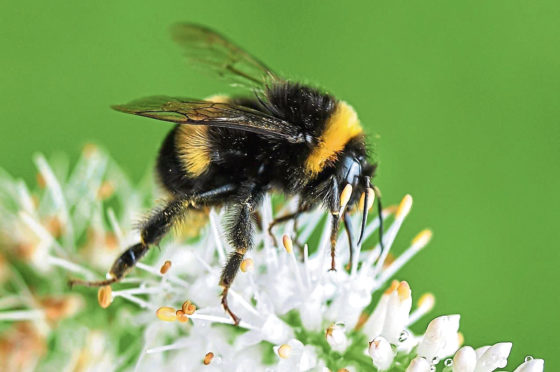Bees and other pollinating bugs play a vital role in our ecosystems, as a third of all consumed food is dependent on them.
The world has seen a slow but steady decline in the number of bees since the 1990s due to the widespread use of toxic pesticides, which can’t differentiate between “good” and “bad” insects.
Climate change has also dealt a devastating blow to the global bee population, as some species don’t cope well with very hot temperatures – they literally overheat.
Pollinating by hand is an arduous task which could cost UK farmers more than a billion pounds yearly, leading to a huge increase in food costs that are also low quality and filled with chemicals.
“The role of bees within our ecosystem is incredibly important and the worldwide decline we have seen is cause for serious concern,” said a spokesman for GardenBuildingsDirect.co.uk
“Every single Brit should do their part, no matter how small, in cultivating the population of our buzzing friends, as without them our ecosystem would literally fall apart.
“By following our simple guide and ingraining a few key steps into your lifestyle, you can make the world of difference.”
How you can help save the bees
Picking plants
Certain plants are much more likely to attract our bees to the garden, so do some research before you plant to find the perfect match.
Lavender, oregano and basil all produce lots of nectar and will be covered in happy, hungry bees.
Avoid pesticides
The majority of insects are not harmful and there is no place for industrial chemicals in the garden, as some pesticides will remain embedded into the soil affecting other wildlife in the long term. Always be wary of using the toxins, even for casual use, unless absolutely necessary.
Choosing honey
Only purchase raw and locally made honey. This will encourage those producing honey to shift their focus and energy towards ensuring that honey is produced ethically.
Do not weed
Weeds can be a nuisance, however they do have their purpose. Plants such as dandelions are a brilliant source of food for bees, especially in early spring, as there is only a limited range of sources available.
Quenching thirst
Even those with limited space can do their part by installing a small water basin for bees to satisfy thirst during the heights of summer.
Just remember to add a couple of stones and floating objects such as a cork so the bees don’t drown.
Keeping bees
If you really want to save the bees consider taking up beekeeping.
Do plenty of research and ensure preparation is done beforehand.
Give bees a home and produce organic and locally made honey for all to enjoy.
GardenBuildingsDirect.co.uk
